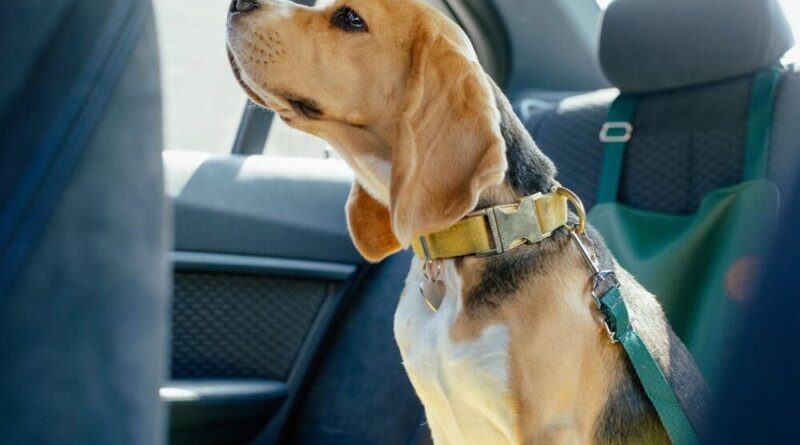Best Dog Travel Tips
Bringing your dog on vacation with you adds to the fun and alleviates the worry of not knowing what’s happening with your dog while you’re on the road. It would help if you did your homework on dog travel, though. Planes and cars aren’t designed with dogs in mind, and you need to know what to expect when you reach your final destination. Planning your dog’s travel ahead of time can make the vacation a truly relaxing time for you and your furry friend. Here is a checklist of dog travel tips made easy.
Preparing Your Dog for Travel
Preparing is essential to the trip’s success and your dog’s well-being. Check the below tips:
- Get health certificate/updated vaccines
- Make sure microchip info and tags are current
- Gather supplies – food, bowls, medications, cleaning products
- Choose a safe, comfortable crate or carrier
- Practice car rides and being in a crate
- Pack familiar toys and treats
Crating Your Dog for Travel
It’s natural to feel bad about crating your dog. After all, you wouldn’t want to be crated. But don’t project your feelings onto your dog. They don’t mind the crate, and some even feel safer in one.
- The most important thing you can do is ensure your dog is well-exercised before entering the crate. He’ll be more inclined to rest if he’s burned off his excess energy.
- Make sure there’s nothing in the crate that can harm your dog. Leashes and loose collars are hazardous items that could present a strangling hazard.
- Keep your energy positive. Don’t present the crate like it’s a prison. Show your pup the crate and open the door. Don’t shove the dog in the crate. Let him go in on his own. When he’s inside and comfortable, you can close the door. Walk away with good energy and body language. If you affect a sad voice and say things like “Don’t be sad. Mommy and Daddy will be back soon,” your dog will think something’s wrong and get anxious.
- Come back in 15 minutes. This will ease separation anxiety the next time you crate him. But don’t take him out of the crate. Remember that you’re not projecting that the crate is a bad thing. Just open the door, and he can come out when ready. See my training video on how to crate your dog for travel.
Driving with Your Dog
Using a crate when traveling with dogs in your car is a good idea. You’ll be less distracted while driving, which is safer for both of you. It also prevents your dog from becoming a projectile if you must stop fast, reducing the chance of injury for both of you. Regarding projectiles, don’t feed your dog much before the trip as they are prone to motion sickness. Don’t feed them while you’re moving, either. Wait until there’s a break, and you can give a small snack, preferably high in protein. Spending a little time playing or walking during the break is also great for eliminating pent-up energy. And, of course, don’t leave your dog in a parked car, especially when it’s warm out. The vehicle can quickly turn into an oven even with the open window, and they will get dehydrated. See the article Dog Is My Co-Pilot (And Other Bad Ideas).
Secure your dog’s crate or carrier in the vehicle so that it does not shift or move during stops, turns, or bumps – this prevents injury. Plan occasional potty and exercise breaks during long drives to let your dog stretch their legs and relieve themselves. Bring plenty of water to avoid dehydration and familiar toys infused with scents of home to comfort anxious pups. With thoughtful preparations and attentiveness to your dog’s needs, car travel with your furry companion can be enjoyable and trouble-free. The key is keeping them securely contained, hydrated, and calm.

How To Travel Safely With Your Dog On an Airplane
The first thing you need to do is check with the airline for their rules regarding pet travel. Many require a health certificate and may have other regulations you haven’t thought of that you don’t want to be surprised with at the airport. Your pet will almost certainly be traveling in a crate, and it will probably make everyone’s lives easier if you crate your dog before entering the airport’s chaos.
As with car travel, it’s wise not to start the trip on a full stomach or bladder and to make a pit stop as close to the departure time. However, ensure your dog has enough access to water to keep hydrated but not full.
If your dog isn’t flying with you in the main cabin, don’t have a big goodbye scene. You’ll only upset your dog. Assert a calm demeanor, and your pet will mimic your actions.
To Medicate or Not to Medicate Your Dog
With almost as large a selection of pharmaceuticals as humans, it may be tempting to medicate your dog with a sedative or calmative for the trip. I don’t recommend medicating your dog. You don’t want to start a pattern that ends with a reliance on pills for you or your pet. You possess all the tools to keep your pet calm with your voice, attitude, and body language.
Keeping Your Dog Calm During Travel
Bring your dog’s blankie or favorite stuffed animal, toy, or bone—any item familiar to your dog that will comfort and relax him.
For extra calm, try rubbing a little lavender oil between your hands and give your pet a little aromatherapy or deep tissue massage at the beginning of your dog’s spine or the base of her head.
Staying in a Hotel with Your Dog
As with flying, a little preemptive research is in order. Does the hotel you’re considering even allow pets? Better to find out before you arrive. Pet-welcoming hotels like Best Western will be prepared for your visit and can even recommend parks, hikes, and other dog-friendly activities. The Continental breakfast is the only thing fit for a dog at other hotels. It can also be embarrassing if your dog barks or howls in the new room. Don’t inadvertently encourage the barking with affection. Stay calm and assertive, and take him out for some exercise to calm him. Below are some additional tips to make your hotel stay more enjoyable for your pet.
- Bring bedding, bowls, and other items from home
- Set up designated potty areas
- Limit access to prevent chewing/accidents
- Request quiet, ground-floor rooms
Go On a Long Walk Once You Reach the Hotel
A recently exercised dog will be more relaxed during any long trip. Your dog may growl at strangers, and that’s ok. It’s natural for your dog to be nervous around new
people. She’s out of her element and may growl. This isn’t because she’s being aggressive but because she needs reassurance that everything’s under control. If you pull her away from the new person, you’re indicating something wrong, and she’ll freak out more. Again, be calm and assertive, and demonstrate to your furry pal that everything is ok.
Exploring a New Place
You’re away from home, which means many new sights, smells, sounds, and potential food items for your dog. Ensure you’re vigilant wherever you go about what’s around, especially regarding things your dogs could ingest. Also, especially around the holidays, there may be a lot of lights, decorations, and snout-level treats that can be distracting or dangerous for your pup. Keep an eye on him and the new place.
Can’t Bring Your Dog Along?
Find a good substitute pack. Your dog should be immediately adopted as a pack member in a kennel. The staff should be able to get your dog focused on what is there for him – and not leave him mourning over the fact that you left. It is a big deal for a pet to detach himself from a pack.
Look into all your options for keeping your dog at home. Friends or family members who may be available to stay with your faithful friend while you’re away. Another Pack Leader who would be willing to board your pet at their home.
Managing the Stress of Traveling with Your Dog
For dogs, travel can be stressful and overstimulating, so pet owners must manage anxiety and make the experience calmer. Maintaining regular routines for feeding, medication, exercise, and sleep whenever possible provides stability. Including plenty of relaxation time in the hotel room and avoiding crowded situations prevents overstimulation.
Keeping your pet on a leash and nearby in unfamiliar places makes them feel more secure. Use pheromone sprays or calming treats if needed but consult a vet first. Bring along favorite toys and bedding with familiar scents. Practice patience and don’t over-discipline nervous behaviors – travel is tiring and stressful for dogs. Focus on soothing your dog with a comforting tone of voice and positive reinforcement for a calm demeanor. The more you can do to reduce environmental stressors and give your dog a sense of safety, the more accessible travel will be for your loyal companion.
Things to Consider for Dog Activity and Safety
One of the most important things to remember is your pet’s safety while traveling. The scenery is different, there are strange people, and it’s not home. Below are some tips for keeping your furry friend safe while on a trip.
When traveling with your dog, research dog-friendly attractions and parks beforehand so you can plan activities suited for bringing your pup along. Protect paws from hot pavement and ground surfaces by having your dog wear booties or limiting walks when the temperature is scorching outside. Bring a collapsible water bowl to provide water for your dog frequently, and watch closely for any signs of overheating or exhaustion, like heavy panting or excessive drooling. It’s also essential to keep your dog leashed when exploring new environments to prevent them from escaping or getting lost, as well as for the safety of others.
Remaining vigilant about hazards, hydration, and your dog’s comfort will allow for fun adventures together. You and your pup can create beautiful memories with some preparation and attentiveness.
Traveling long distances with dogs can be a fun experience for all involved. Just remember to be as prepared as possible wherever you go. The more homework you do on dog travel, the fewer surprises there will be. Don’t forget to ensure your dog gets plenty of exercise and, above all, be calm and assertive. A balanced dog makes the best travel companion.
What are the best dog-friendly destinations in your area? What tools for traveling with dogs have made your experience better? Please share it with us in the comments.
The post Best Dog Travel Tips appeared first on Cesar's Way.



